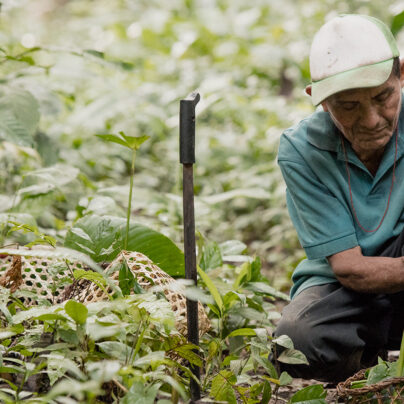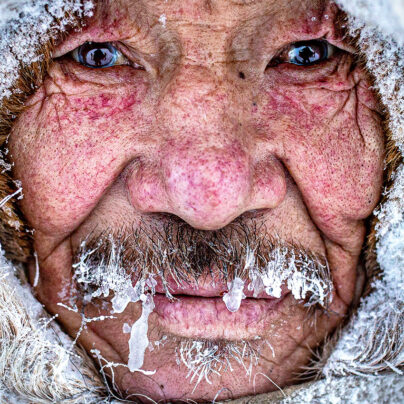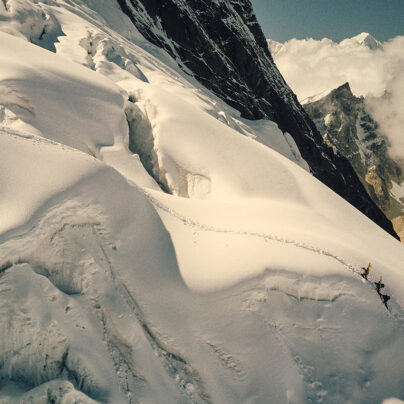Rub’ al Khali
James Borrell
A small solitary figure stood staring into the embers, his pale white dishdasha hanging loosely around him lending a ghostly appearance in the pre-dawn light. Slowly and melodically his voice carried across the dunes on the cool North wind, calling the others to prayer. The sun is still a dull glow beneath the horizon, and the fine sand that makes up this remarkable landscape remains cold to the touch. We are in the Rub’ al Khali, the Empty Quarter, and never has a name seemed to so aptly describe a place.
I lay quietly in my sleeping bag on the dusty plains, nestled in amongst towering dunes, letting the Arabic versus drift over me. Mohammed, a local ranger, would rise each morning calling our Omani companions to prayer (and giving the occasional gentle kick to anyone sleeping heavily). I sat eating my porridge ration in silence as they knelt and bowed as one towards Mecca. I felt a very long way from home.
Growing up in Colchester, a nondescript town in North Essex, I hadn’t envisaged a path through life that could result in waking to prayer call in a remote Southern corner of Oman. Essex was unremarkable, save perhaps for a slightly higher than average ignorance of the outside world. The safe and forgiving gentle green fields, persistently overcast grey skies and frequent rain were as far removed from the golden orange dunes of the Empty Quarter as I think it is possible to be. Sometime later I became a biologist with an interest in conservation. Oddly, and through blind chance, it is this that would lead me all the way from England to this barren and apparently lifeless corner of the earth as a scientist with the British Exploring Society.
The safe and forgiving gentle green fields, persistently overcast grey skies and frequent rain were as far removed from the golden orange dunes of the Empty Quarter as I think it is possible to be.
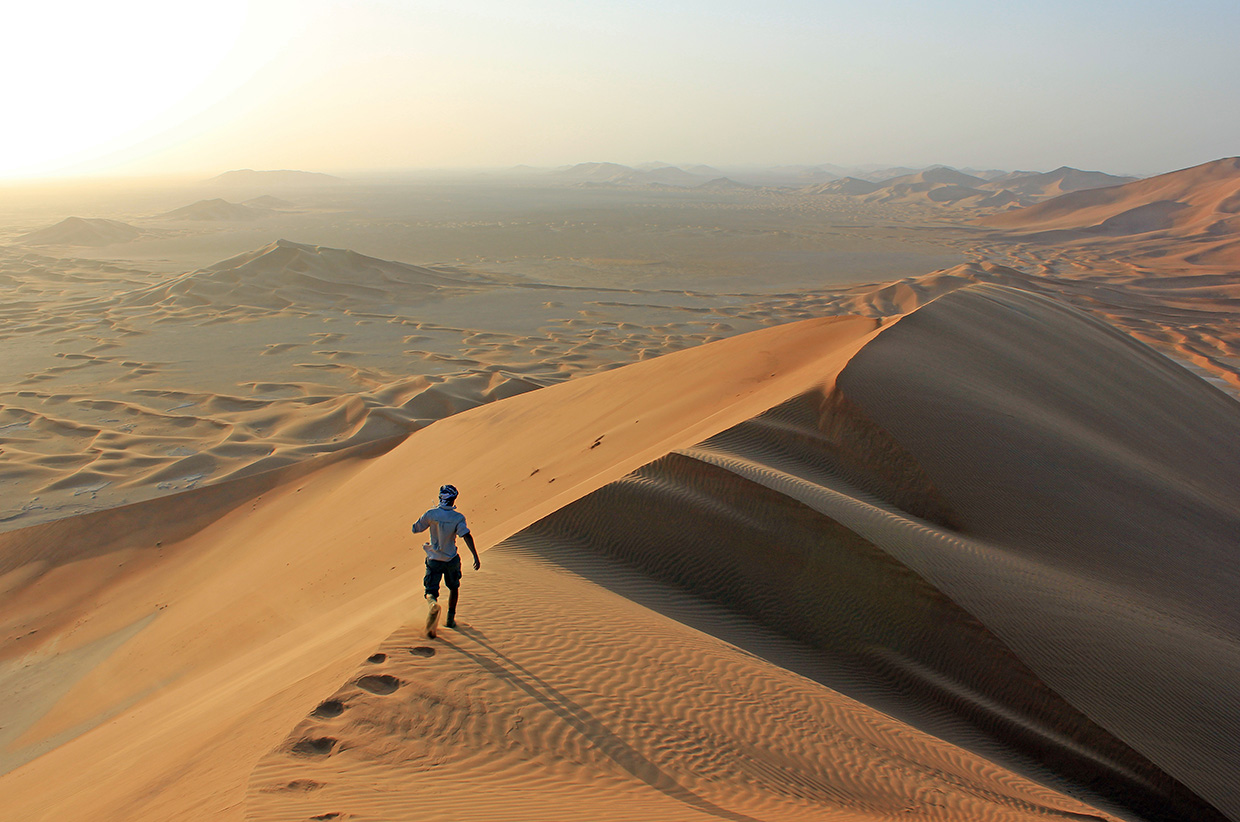
It is not the goal but the way there that matters. The harder the way, the more worthwhile the journey.
In early January of this year, minced pies and mulled wine still fresh in our minds (and the sudden heat confounding our senses) we had bounced along the newly tarmacked road heading North from the coastal city of Salalah, birth place of Sultan Qaboos. Dhofar, the Southernmost region of Oman, was in the 1970’s consumed by a bitter guerrilla war, the coastal mountains and plains forming a battleground between rebels and government forces, incidentally backed by the British. Little sign of this unrest remains, aside from the occasionally discovered spent mortar shells, half buried in the hillside. Oman is now a comparative oasis of calm and composure in a region apparently prone to unrest.
We passed through Thumrait, once a vital part of the caravan trade route, and shortly after, turned off on to an inconspicuous track, snaking away into the distance. Great plumes of fine dust trailed the vehicles, rising up in the breeze and drifting to the East, covering everything in a blanket of dull orange sand. From here on it would meticulously find it’s way into everything, including our food.
Small car sized dunes began to appear; slowly at first and often in the middle of the road, as if warning us to turn back. Relentlessly they make the laborious journey across the plains. Shimmering on the heat haze rose the minarets of Al Hashman, a small settlement surrounded by a low white wall and perched on the edge of the vast wilderness. We filled our containers with water and sat drinking sweet Omani tea, whilst trying to explain to our hosts the logic of continuing into the desert. They thought it seemed a silly idea (they were probably right) and of course it was dangerous and we were English they reasoned. Nevertheless, we heaped thanks upon them, said our Salaams and set off once more deeper into The Sands. From here, the dunes continue unbroken for at least five hundred miles in every direction engulfing the heart of the Arabian Peninsula, to Saudi and the UAE in the North and close to the Red Sea and Yemen in the West.
The dunes grew bigger now, running together in great impenetrable ranks and towering above us with vast smooth slopes and knife like ridges. We navigated the gravel plains that interspersed them, growing smaller the deeper we went. Geodes crumbled with a thud under the tyres. Mysteriously abundant in this small region of the desert, these geological oddities range in size from a small marble up to perhaps as large as a basketball and look somewhat like rounded petrified cauliflowers. How they form no one is really sure, but when broken, closer inspection reveals an inside densely packed with glistening crystals that range from pale green to a deep violet. Scattered so generously across the landscape, they were impossible to avoid.
As the day heats up, the sand becomes softer and very soon we became stuck. The desert teaches lessons quickly and without fuss, leaving us to dig our way out laboriously in the mid-day sun. A short time later we made base camp in a natural amphitheatre flanked by two large dunes, hastily erected a tarpaulin between vehicles and sought shelter from the oppressive heat. Over the coming days we would begin to acclimatise. This we told ourselves regularly, but it is a token notion when the mercury hits 40 and continues to rise. And so we were in the Empty Quarter, or simply The Sands as they are known in Arabia. Ahead of us and around us was nothing, silence prevailed here.
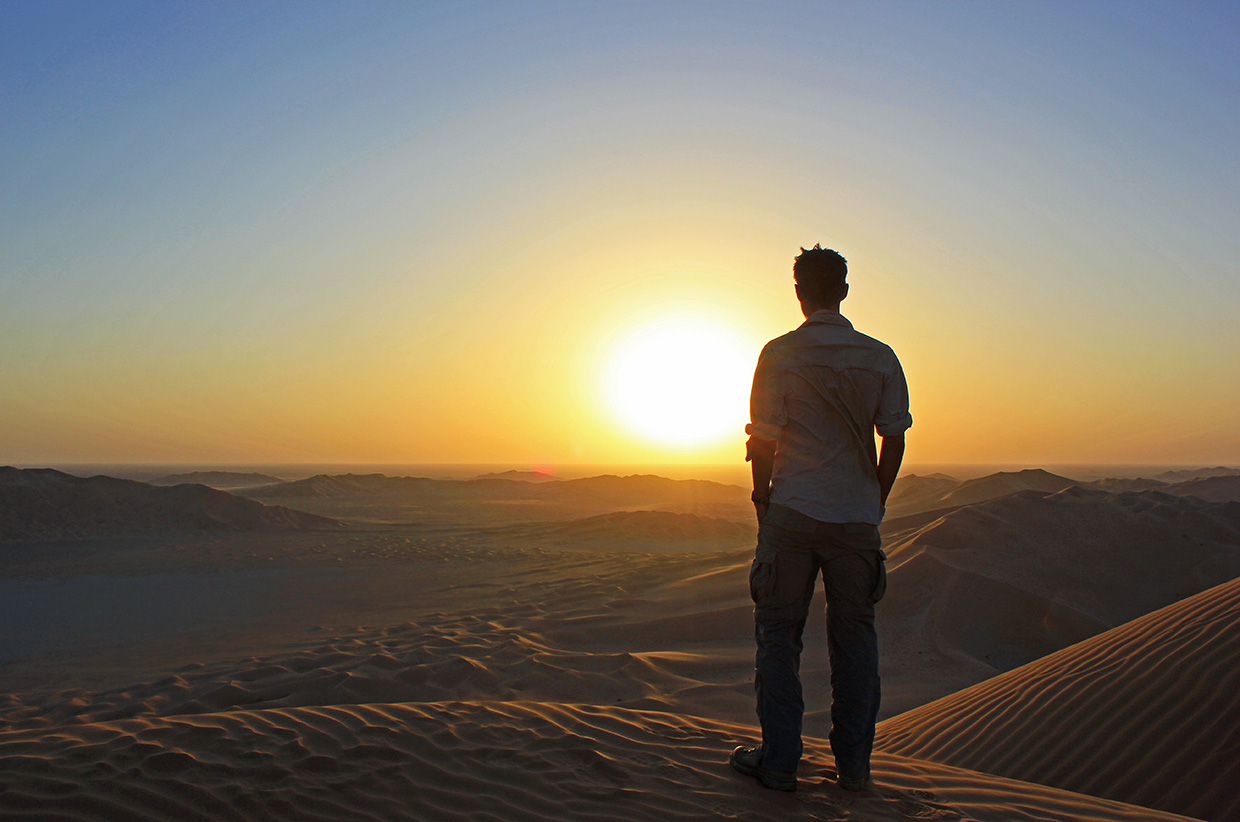
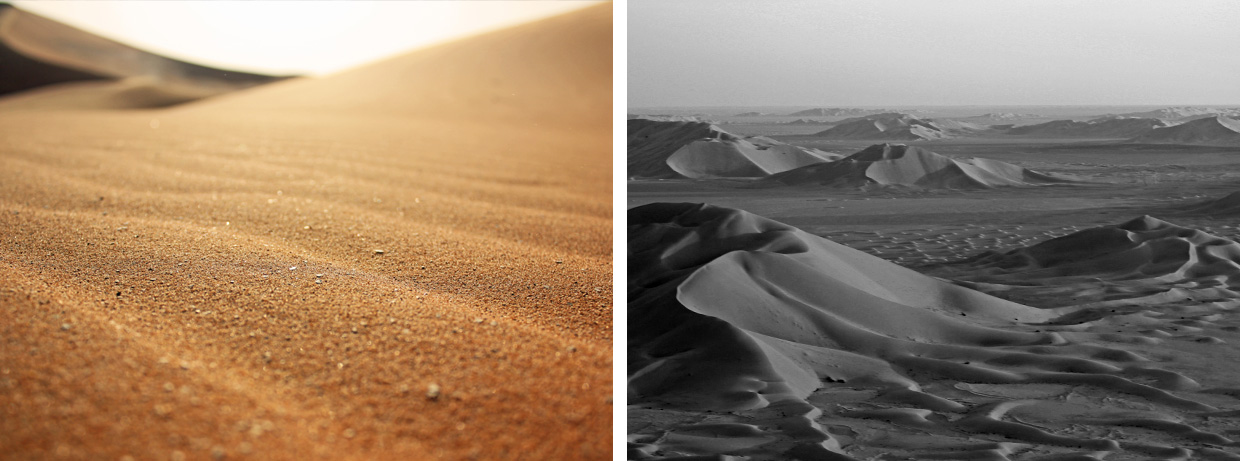
As a biologist, I had a somewhat barren impression of the desert, and it was to address this common misconception that we had come all this way. Under the cover of darkness as we slept out under a night sky brimming with stars, the desert would come alive. At dawn, to our surprise, the immaculately smooth sand would be crossed with the tell-tale signs of life just feet from where we had laid. Tracks and trails, seemingly at random, heading this way and that, away from curious eyes eking out an existence in this forbidding landscape.
Soon after arriving we set out in teams to explore the area. We had come equipped with camera traps, small portable cameras triggered by an infrared sensor, designed to remotely film passing animals. In a landscape so sparsely filled with prominent features – the dunes roll endlessly into a sea of sand – deciding where to place our traps was a considerable challenge. We learnt to distinguish one area from the next by the feint presence of greyish wisps of vegetation or the slightest indication of water under the surface. We found ancient and gnarled bushes clinging to existence in the hollows of dunes, and small brilliant green bushes left undisturbed and perhaps full of poisons. We built pitfall traps for insects and reptiles, laid small mammal boxes to catch Jerboa and Jird (all harmless I might add) and undertook all manner of experiments to document the life here.
We looked closely at a landscape we might have simply journeyed through, and in just a few short weeks saw the many faces of the desert. Far from this empty nothingness we woke to dew covered sleeping bags and mist shrouded dunes as moisture rolled in from the coast and shivered as night-time temperatures plummeted to freezing point. We whooped with joy after climbing laboriously up countless sandy peaks and marvelled at the deep resonating rumble emanating from within as we descended. We experienced the unpleasantness of a mild sand storm and grew accustomed to having grit in everything we ate or drank. Above all we cherished the simplicity of life here.
As our time drew to a close, we huddled around the bonnet of the vehicle in the cool of our final evening and loaded images from our camera traps. The team gathered in anticipation. A curious thing about camera traps is that you live in blissful ignorance of the life around you, until it comes time to leave and you retrieve your findings. In all honesty we had been ambitious and wildly unrealistic. We were a relatively inexperienced team, from a myriad of backgrounds, hoping to scratch the surface of this unimaginably vast place.
Surprisingly, as the grainy black and white video clips flickered into life, there was life right in front of our eyes. Whiskers sniffing at the lens, fur, teeth chewing curiously at the casing, and a Sand Fox scurries off into the distance (Vulpes ruppellii for nerds). Later we found another, and another, hares too, and signs of great spiny-tailed lizards called Dhubs. It’s hard to over state our elation at simply finding anything at all. The desert is a desolate, silent place, beautiful in it’s simplicity more than anything else. But if you can get beneath the skin of this vast wilderness, there is much more than meets the eye.
Occasionally, when you least expect it, the wildlife found us. I woke sleepily the following morning to an inquisitive camel peering back at me in the half-light, standing nonchalantly at the foot of my sleeping bag while his friends rummaged our belongings for food and water.
Reluctantly we loaded the vehicles and headed South to continue our fieldwork over the coming weeks in Dhofar’s Coastal mountain range (Oman really is a surprising gem!). The desert slipped away behind us in a cloud of our own dust. Wilfred Thesiger wisely once said that no man leaves the desert unchanged, however slight. Now, pondering on that great barren wilderness, so desolate and harsh, I confess that those great sands have enchanted me, and I long to return.
Wilfred Thesiger wisely once said that no man leaves the desert unchanged, however slight. Now, pondering on that great barren wilderness, so desolate and harsh, I confess that those great sands have enchanted me, and I long to return.

James is a conservation biologist with a passion for fieldwork and a keen interest citizen science. He is currently undertaking a PhD in conservation genetics at Queen Mary, University of London.
James’s main research interests are the effects of habitat fragmentation on the conservation of rare species. He is also a keen advocate of youth development through scientific expeditions. James can now be found working on a new conservation project in the Scottish Highlands.
Find out more via his website: http://www.jamesborrell.co.uk or follow James on
Twitter @James_Borrell




